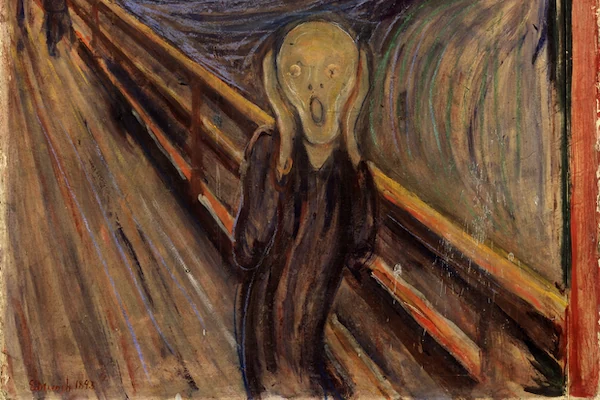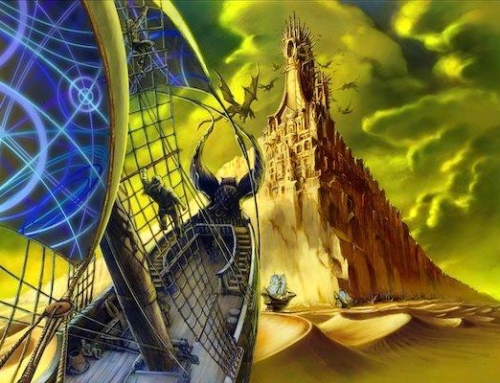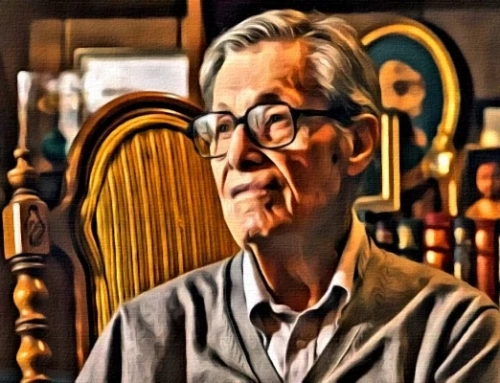
I spend a LOT of time thinking about horror stories.
Part of that is, admittedly, just because I really enjoy them. My best friend is a giant horror buff (seriously, her horror cred is off the scale), and I’ve had quite a few other friends and even teachers who love horror, so it was kinda inevitable that I would grow to love horror, I think.
Another part of it, though, is the fact that horror stories are profoundly interesting on several other levels, ranging from the technical to the philosophical. Horror is the most moralistic of genres, something that can be seen clearly in their close relationship with old-school children’s tales. Grimm’s Fairy Tales, notably, tend to have plot structures almost identical to many modern horror movies. In a horror story, the victims are almost always being punished for something. In slasher films, they’re punished for being young and stupid. In zombie films, people are being punished for modern consumer culture and the collapse of the bonds of community. In many monster stories, especially sea monster movies, people are being punished for trespassing. In the Thing, the sin is paranoia and distrust. So on and so forth. (And in at least half to two thirds of horror stories, capitalism ends up being the evil in some way. Which is still less than first person shooters, in which literally every single game except for those about killing Nazis are about the evils of capitalism. Especially Doom.)
I could go on for a long while about horror morals, but it’s not really the point of the essay. It’s meant to point out how weird and formalistic the genre is. And it’s meant to illustrate the first leg of a tripod.
Horror is also an incredibly diverse genre, and one that’s deeply based off of cultural trends ⏤ most especially, what a specific culture fears at any given time. Any horror fan can point out the immediate and obvious differences in structure, pacing, sin punished, stylistic choices, etc. between American horror, Japanese horror, Korean horror, so on and so forth. Most of them can also pretty easily hold out on how horror story trends change over time ⏤ slasher films increasing in popularity alongside the rising crime waves of the late 20th century and dying back down as said crime wave receded; zombie films escalating steadily in popularity with, well, basically everything; home invasion horror films increasing in popularity with xenophobic anti-immigration rhetoric from politicians; Lovecraftian horror increasing in popularity with growing awareness of climate change, ocean acidification, mass extinction, and the rest of the ecological crisis.
So there’s our second leg of the horror tripod. We’ve got moralistic warnings and cultural fears. Those aren’t particularly novel observations, or even unusual ones. So what’s the third?
Myopia.
(I mean, it was literally in the title, what were you expecting? Boris Karloff?)
I’m going to leave horror stories for a second here, and talk about alcohol. Weird, I know, but bear with me here.
For a long time, scientists thought alcohol essentially stripped you of your inhibitions, freed you to do whatever you want. (Most laymen still think this.) And then a counterargument for that came from a somewhat surprising field: anthropology. Anthropologists started discovering something seriously interesting about drinking behavior around the world: namely, that it varied wildly from culture to culture. In one culture, drunks were peaceful, pleasant, and quiet, and there wasn’t any sort of sex culture associated with drinking. In another, they were prone to frequent, ritualistic fights that never resulted in fatality or serious injury (despite almost everyone being armed- the combatants would hand off their knives, machetes, or guns to their friends before the fight started) and the fight would usually end in hugs. Which, well, that’s fucking weird, and not something simple biochemistry can explain, and loss of inhibition fails to explain either. It came to appear as though our behavior while drunk was essentially determined entirely by our context, our situation. The same person drinking with a buddy while fishing on a lake will behave radically different than when drinking at a sporting event. So what explains this weird variance in behavior among drinkers?
Myopia.
Scientists have now come to understand that rather than lowering your inhibitions, alcohol reduces your ability to see beyond the current situation. It shortens the range of your understandings, interests, and planning in response to your immediate temporal, social, and physical surroundings. (It does this by interfering with your frontal lobe and such. Blackouts are caused by alcohol affecting the hippocampus.) This ends up resulting in the drinking culture you’re in having a massive impact on how you’ll behave.
So how does this relate to horror stories? Loaded question, I’ll admit, because I’m obviously about to say that horror stories do the exact same thing to readers, viewers, listeners, or players: they create myopia. They do so in very different ways, and for different reasons, but ultimately, myopia is at the absolute heart of horror.
Let’s start with how horror stories create myopia*.* This is the easiest one. Most horror stories happen at night because it reduces your ability to see. Darkness is a quite literal myopia. Horror stories almost always isolate the characters, creating a sort of social myopia. Horror stories frequently force characters into time sensitive decisions again and again and again, forcing them into a sort of temporal myopia where they have no opportunity to plan their future decisions. Heck, the notably challenging control schemes for many horror video games? They might have started off as something of an accident, but they stayed around because the added effort of controlling your character vastly increases your myopia within the game. It’s not hard to think of other ways that horror does this at all.
More interesting is the why. At the surface, it’s simply to make it easier to scare you. If you’re focused heavily in the moment, with limited ability to see past that, it’s much, much easier to startle, scare, or unsettle you. This is the basic foundation of the crudest of horror techniques, the jump scare. Make you myopic, suddenly introduce something unexpected, jump scare. But it’s also the foundation for much deeper and more interesting jump scares. Take the famous scene in the graveyard at the beginning of 1968’s Night of the Living Dead. By having Johnny taunting Barbara in a manner familiar to anyone with siblings, the movie establishes an immediate context for the scene. Shit your sibling makes up to scare you, after all, is never true, however scary it is. This is a fundamental cultural tenet, after all. The shit your sibling says to scare you is always made up, and it’s always annoying. This creates a sense of sociocultural myopia for what’s supposed to happen next, which the movie promptly violates by having the sibling’s mocking warning come true.
So, essentially, that myopia is just a way of establishing expectations, so the story can then violate them. A more powerful manner than in most genres, to be sure, but still just establishing expectations. (Humor, arguably, is even better at and more reliant on establishing expectations to violate.) If that were all there were to myopia in horror, it would be an interesting writing/cinematographic trick, but that’s about it. But that’s far from the entirety of horror myopia’s raison d’être.
The myopia of horror isn’t just a technical device, but also one that mirrors terror in real life. Being truly terrified both puts you into a state of myopia and requires you to enter a state of myopia to exist. When you’re terrified of, say, a house centipede that just fell from the ceiling onto you while you’re in bed, you’re generally not going to be thinking about your student loan debt and what clothes to wear today. Conversely, if you’re stressing too hard about your student loans, that actually heightens your ability to simply brush off the house centipede in irritation, because you have too much on your mind already. (I mean, sometimes. I’m not sure there’s anything that could keep my mind off a house centipede. So gross and awful and uggghhhh.)
Really, any high-stress situation produces myopia, though. It’s literally just a symptom of adrenaline. So that’s also not enough on its own to make horror myopia interesting.
The really interesting thing about horror myopia? It’s not about what it keeps you from seeing. It’s about what it lets you see. It’s about what the myopia makes you focus on. It’s this that makes the messages of horror stories so disproportionately impactful. 1968’s Night of the Living Dead? By all accounts, it wasn’t really intended as a powerful piece of commentary and criticism of racism and racial politics. Today, though, it’s remembered high on the lists of works of art discussing issues of race from the 1960s, and considering the sheer weight of such works of art from that time in both quality and quantity, that’s one hell of an achievement. One, to be sure, that’s FAR disproportional to Night of the Living Dead’s quality as a movie. (As much as I love it, and as much as I consider it one of my all-time favorites, I have to acknowledge a lot of its shortcomings.)
That incredible power to challenge an audience, to force them to confront uncomfortable truths and questions? That’s the most interesting thing about the myopia of horror stories. Remember the other two legs of the tripod, horror morals and cultural fears? The myopia is what lets you confront those two and question them in a serious manner.
At the same time, don’t mistake the myopia merely as a subordinate leg of the tripod that allows you to explore the other two. They feed back into the myopia as well. Setting up a moral for the horror story? This acts as a type of myopia, because it lets the audience know what actions will be punished, so they stop expecting punishment outside those actions. (Failing to establish/obey said morals is one of the most common fail states for a horror story in any medium.) And the cultural fears? Those establish a sort of foundation for the story, one that lets the audience know in what nebulous story space horror myopia occurs. Both allow for a more in-depth, active exploration of myopia itself, which is an absolutely essential topic to explore as a human, and a quite difficult one at that. All three of these legs of the horror tripod feed into one another.
Of course, it’s entirely possible to establish some sort of essential framework for a horror story that doesn’t rely on this tripod. It’s just a model, and all models lie. Some are just useful despite that.
And, of course, essentially all art relies on myopia to one degree or another as well, this isn’t something unique to horror. Rather, it’s one of the greatest strengths of the genre, something it does better than almost anything else.
Of course, there’s one more question that needs answering: If this model of the essential framework of horror is a tripod, what’s at the top?
Honestly, I haven’t really looked. It’s probably a knife-wielding clown. With a house centipede for a tongue.
(Sorry, no, the top of the tripod in this model is just the uncomfortable question or truth the horror story wants to explore. I just wanted to put the image of a knife-wielding clown with a big old house centipede for a tongue in your heads.)
John Bierce
2 Comments
Comments are closed.





This was a great essay on horror. I’m curious to know if you’ve published any horror stories. If so, can you share their titles? Based off of this essay, I’m interested in reading your take on horror.
Haven’t written any horror novels, but I did recently release a horror short story (Ghost Ship) on my Patreon, set in the Mage Errant universe!